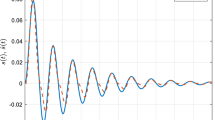This paper proposes a new multi-strategy (hybrid) intelligent control technique whose concept is applicable to the control of a wide range of processes. The proposed technique uses Incremental Tree Induction (ITI) as the learning algorithm, and incorporates fuzzy logic to deal with uncertainties apparent in the process to be controlled. ITI operates solely on symbolic fuzzy knowledge, as both the input features (data obtained from the process to be controlled) and the output decisions of the intelligent controller are described by fuzzy linguistic variables. Fuzzy associative memories (FAMs) are employed to store and manage the fuzzy knowledge, and are simulated operationally by fuzzy binary decision trees which encode the input-output space. The main novelty of this approach is the automatic synthesis (both off-line and on-line) of multi-dimensional FAMs from inception, in contrast to the manual implementation of traditional FAMs. A second important advantage is the self-explanatory nature of the FAMs (and their underlying control laws) generated by this approach. The new technique is demonstrated in its application to the intelligent navigation of a mobile robot.
Similar content being viewed by others
Author information
Authors and Affiliations
Rights and permissions
About this article
Cite this article
Shah Hamzei, G., Mulvaney, D. Implementation of an Intelligent Control System Using Fuzzy ITI. NCA 9, 12–18 (2000). https://doi.org/10.1007/s005210070030
Issue Date:
DOI: https://doi.org/10.1007/s005210070030




